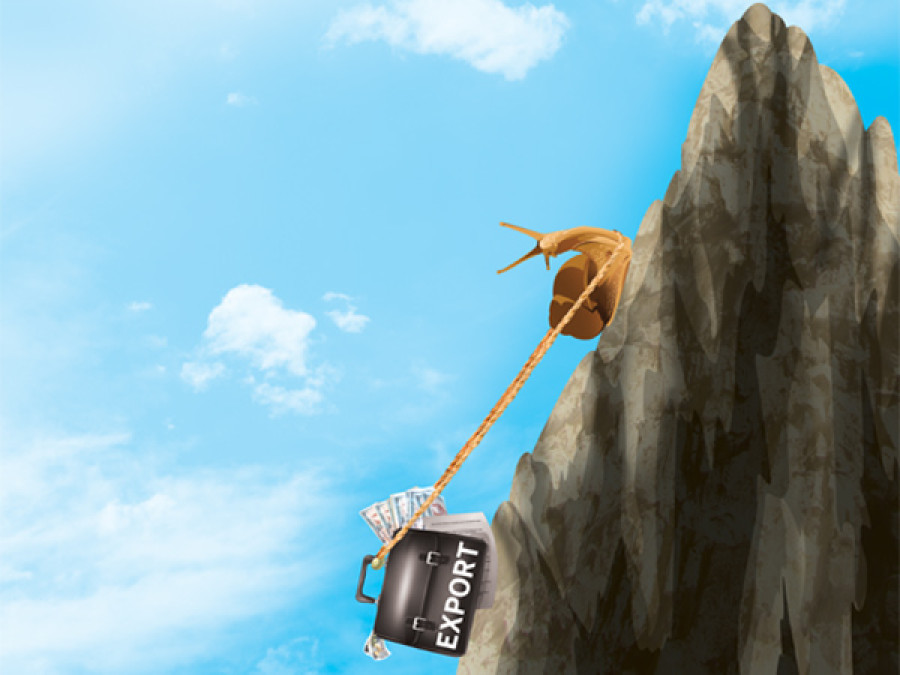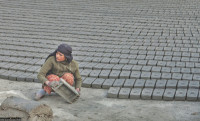Opinion
Think trade
There are many areas where Nepal and India could work together to enhance trade
India and China are the two largest trade partners of Nepal. However, Nepal’s trade with both the neighbours is heavily skewed towards imports. The trade data of 2013-14 shows that Nepal’s exports could meet only 15 percent and 2.5 percent of the imports from India and China respectively. Maintaining complementarities is thus a big issue for sustaining Nepal’s trade with these two fast growing neighbouring economies. Nonetheless, the stakes are particularly high with regard to Nepal’s commercial relations with India as it accounts for almost two-thirds of its international trade.
Linked with India
The economic history of Nepal reveals that India has been its single largest trading partner from the ancient and medieval to modern times. This is corroborated by the long porous border, and the linkages between the production and supply of goods and services that have remained unbridled. The two-decade-long period of declining exports to India, particularly during the 1970s and 1980s, was reversed by the liberal trade treaty signed in 1996, and the ensuing five years showed a dramatic growth in shipments to India. The collaboration between private sector entities like the Federation of Nepalese Chambers of Commerce and Industry (FNCCI) and the Confederation of Indian Industries (CII) provided stimulus to promoting bilateral trade and support for concluding the much-touted trade treaty in 1996.
This momentum was lost from 2002 following a revision in the treaty and the inclusion of stringent provisions regarding the qualification of export goods. The other reason for it was growing competition in the Indian market due to trade liberalisation and the removal of tariff barriers.
The current seven-year cycle of the Nepal-India trade treaty will be over in October 2016. And as international trading regimes have undergone multiple changes in over the last decade, the bilateral treaty now should be able to cope with the emerging challenges associated with the non-tariff barriers, connectivity and, over and above, the competitiveness issue which is eroding Nepal’s export trade.
Finance Minister Ram Sharan Mahat adequately highlighted the need to focus on products of comparative advantages like cement, high value agricultural commodities and non-timber forest products as Nepal’s export potentials while speaking at a recent programme organised by the Nepal-India Chamber of Commerce and Industry. During the same event, Indian Ambassador Ranjit Rae reiterated the need to set a time-bound quantitative target for the trade between the two countries and launch efforts to achieve it.
Collaborate with India
Indeed, there are many areas where Nepal and India could work together to enhance the trade in goods and services and the promotion of joint collaboration in the field of protecting intellectual property rights. Services, tourism and hydropower are some of the potential areas where Nepal needs to build its supply capacity for increasing exports. Another area would be intra-industry trade where arrangements could be made to source intermediary products from Nepal for large manufacturing units in India. The current trend in international trade is moving towards trade in parts as it is said that around 40 percent of the international trade is taking place among manufacturing units. Nepal and India have not been able to catch up with this mode of doing trade. Such an arrangement requires the removal of border barriers including the provision of seamless transportation without involving the extra cost burden of cross-border transportation of goods and services. This is something that Nepal should seek to achieve with its neighbouring countries.
Furthermore, investment is the key to a full blown growth of trade. Trade, in other words, is the ultimate outcome of investment. In Nepal, multinationals like Dabur, Unilever, Arti Strips and Surya Nepal set up their manufacturing units during the 1990s and early 2000s and became prominent export houses of Nepal. Even today, India occupies more than 40 percent of the foreign direct investment in terms of the volume of the invested amount. The investment paradigm needs to be further enhanced and nurtured in order to enhance the growth of export trade. The government and businesses need to work together to promote investment by organising road shows highlighting the investment project, holding discussions and interactions on the means and measures of funnelling more investment into Nepal and creating synergy through collaboration and cooperation between potential investors from both sides of the border.
Increase collaboration
The joint economic cooperation (JEC) mechanism between the FNCCI and the CII has been an effective instrument to advise and support the government in streamlining bilateral issues on economic cooperation. Both the governments are confident about this mechanism. It is well appreciated that the outcome of the 1996 treaty was a glaring example of the coming to fruition of this mechanism. Since the two governments are prepared to renegotiate the trade treaty for the next phase, the activation of this private sector-led institutional mechanism has become more important than ever before. However, it is equally important to explore the possibility of turning this mechanism into a permanent cross-border trade facilitation body as envisioned in the World Trade Organisation trade facilitation agreement.
Producers, logistics service providers and traders are the key players in international business and trade. The role of the government is mostly confined to facilitation and regulation, and creating a conducive environment for investment and doing business. Hence, it is important to promote collaboration and dialogue between the various stakeholders within the government and private sector entities that will create synergy in the development of the economy.
Additionally, the government needs to most to create synergy in production and export in order to increase export earnings, create jobs for a large number of people and boost national revenue.
Ojha is a former secretary at the Ministry of Commerce and Supplies




 10.12°C Kathmandu
10.12°C Kathmandu









